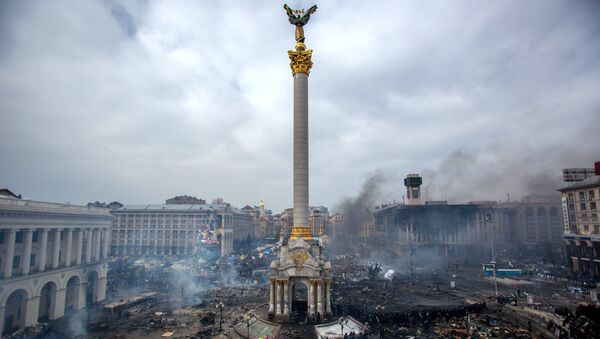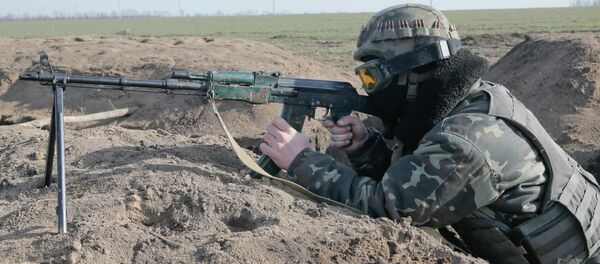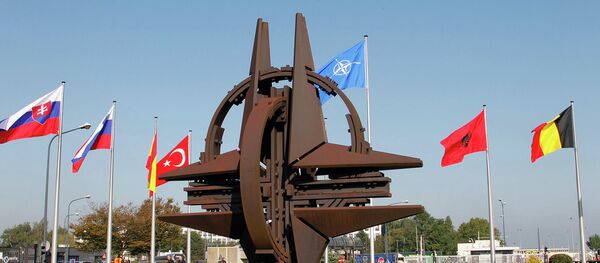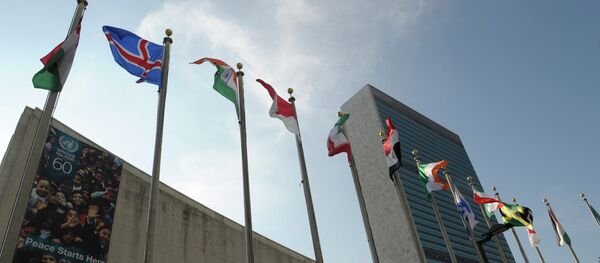Anastasia Raevskaya — The Ukrainian crisis, which started in autumn 2013 with a division in Ukrainian society, developed into a full-scale military conflict, claiming lives of nearly 6,000 people, making the country a hotbed of political instability and raising security concerns among neighboring European countries.
“I would not speak of a mere ‘crisis’ anymore because that would be blurring the facts. In Ukraine, on the ground, we have a full-fledged war,” Ulrich Kühn, a Research Fellow from the Institute for Peace Research and Security Policy at the University of Hamburg, told Sputnik.
The new Minsk agreement, also known as Minsk-2, foresees a package of measures to diminish violence and reduce fighting in the country, including withdrawal of heavy weaponry by Kiev forces and militias in the south-eastern regions, constitutional reform in Ukraine and special status for Donetsk and Luhansk People’s Republics, an exchange of prisoners, as well as pullout of all foreign military formations from the territory of the country.
“If the ceasefire turns out to be stable and if the Ukrainian government will be able, in a subsequent step, to start a constitutional reform which takes into account the valid rights of its Russian-speaking minority, the war in Ukraine could be ended,” Kühn claimed.
However, speculations about a possible redeployment of heavy weapons by both sides as well as the armed clashes in the city of Debaltseve, late February, show that the truce remains very shaky and that its implementation will be a very difficult task for all parties involved.
According to the expert, there are three possible scenarios for further development of events in Ukraine:
Scenario 1: The truce proves to be stable.
In this case, Ukrainian authorities are able to carry out constitutional reforms, representing, among others, the Russian-speaking minority’s interests. Donetsk and Luhansk self-proclaimed republics receive a special status with a veto power over important foreign and security policy decisions of Kiev, while Western countries incrementally lift their anti-Russian economic sanctions and cooperate with Moscow to support the Ukrainian economy. The probability of this happening is about 20%.
Scenario 2: The ceasefire remains fragile.
Scenario 3: The conflict worsens, the fighting intensifies.
Violence erupts again and armed clashes in south-eastern Ukraine become more frequent. Western countries heavily increase anti-Russian sanctions and start arming the Kiev forces. Moscow, for its turn, lends military support for fighting militias. Consequences of this scenario may be significant, leading to the deployment of additional defensively-oriented NATO forces in Eastern Europe and increasing Russia’s isolation from Western countries. The chances of this scenario coming true are around 20 percent.
The settlement of the Ukrainian military conflict, Kühn argues, requires a high degree of compromise from all conflict parties, non-involvement of external armed forces as well as sustainable economic support from Western countries and Russia.
The cooperation between Russia, the EU and the US is, however, difficult to realize as relations between Western states and Russia have dramatically deteriorated since the beginning of the Ukrainian conflict. Western leaders blamed Russia for playing a negative role in the internal crisis in Ukraine and imposed several rounds of sanctions against Moscow, while Russia repeatedly denied the accusations and claimed its non-involvement in the military conflict.
“The conflict between the West and Russia will not be overcome smoothly — even if the war in Ukraine comes to an end,” Kühn said. He described this confrontation as “fundamental,” arguing that it is likely to last at least for the next years if not decades to come.





